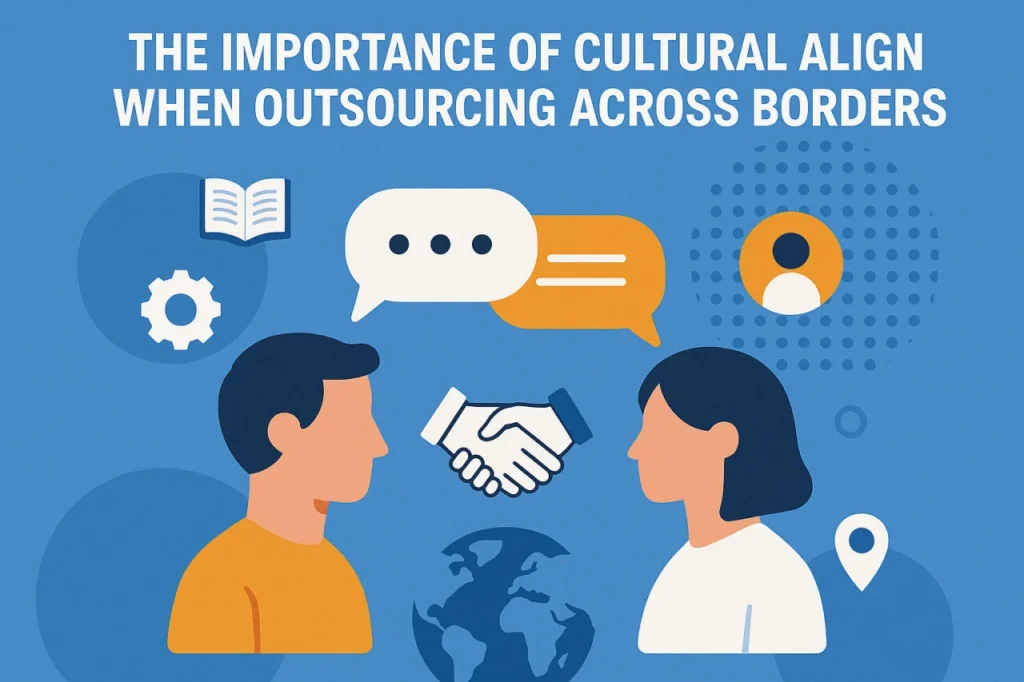
Cross-border outsourcing has brought unprecedented opportunities to companies, allowing them to access talent across different parts of the world, cut costs, and benefit from specialist skills. With such opportunities, however, come the threat of pitfalls, most of which relate to cultural differences. Cultural fit is one of the most important ingredients in developing successful outsourcing partnerships. Without cultural alignment, companies can be vulnerable to communication breakdown, miscommunication, and process inefficiencies. Why cultural alignment is important and how to get there is discussed here.
Cultural differences can significantly affect team communication. Tone, language, or context-based disagreements can lead to confusion and delays. Culture-based alignment establishes more effective communication with clearer intentions and expectations.
Example:
An American firm outsourcing to a Japanese team might need to adjust to Japan’s focus on indirect communication and formality while maintaining respect for its directness.
Cultural alignment creates a feeling of mutual respect and understanding that is essential to collaboration. Teams that have respect for one another’s cultural heritage are more likely to establish trust and collaborate towards a common objective.
Why It Matters:
Trust is central to any effective outsourcing partnership. In its absence, cooperation can be perceived as transactional instead of cooperative.
Example:
A European company outsourcing IT services from an Indian team can build trust by honoring Indian holidays and festivals and by open reporting.
Misalignment of cultures can result in conflicts and misunderstandings due to differences in work ethics, problem-solving, or decision-making styles. Prevention of these through forethought and solving them reduces misunderstandings and leads to efficient running.
Example:
A US organization will prefer snap decisions, but its German outsourced partner will value analysis. Both methods should be understood and valued to avoid frustration for each other.
Culturally aligned teams know how to work better. They can expect to be able to communicate with each other’s needs, respond well to setbacks, and go with the flow of changing situations effortlessly, thereby being more productive.
Why It Works
Cultural alignment minimizes friction, so teams can maintain their focus on accomplishing things rather than on working out interpersonal relationships.
Example:
An Australian marketing firm outsourcing to a Filipino team might find that shared work hours and communication styles enhance efficiency and productivity.
Outsourcing is not about getting work accomplished—it’s about forming long-term partnerships. Cultural congruence is the way to ensure both parties are respected, valued, and committed to the partnership long term.
Why It Matters
A partnership that is understood by both parties has better chances to succeed, even through tough times.
A tech startup collaborating with a Ukrainian software development team can achieve cultural convergence through team-build events, virtual team sessions, and periodic feedback sessions to consolidate the partnership.
Tips for Cultural Alignment
Train internal as well as outsourced teams to get to know each other’s cultures, communication, and expectations.
Multicultural leaders who have worked in various cultures can serve as a bridge, facilitating harmonious cooperation.
Establish a comfortable environment where members express worries or pose questions regarding cultural differences.
Make use of technologies such as video calls, project software, and chat websites to fill communication gaps.
Recognize and appreciate differences in culture for providing a great and hospitable work environment.
Conclusion
Offshoring across borders is in a globalizing world becoming an exception rather than a norm. Synchronization of cultures does not occur naturally, but through continued effort on the part of all the stakeholders. Through mutual respect, understanding, and open communication, companies can release the full potential of their outsourcing contract and benefit in the long term.

Please feel free to contact us for any inquiries or to discuss your outsourcing needs.
Copyright @ 2024 by Pumraw Consultancy
Web Design by Pumraw Consultancy